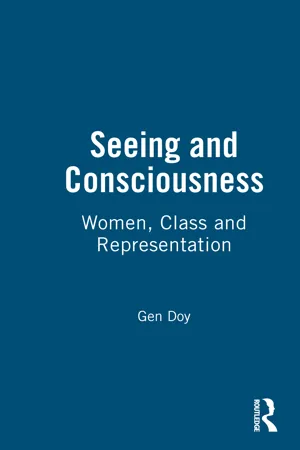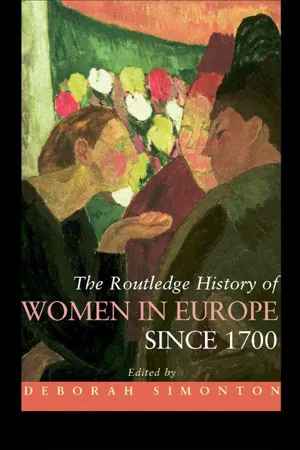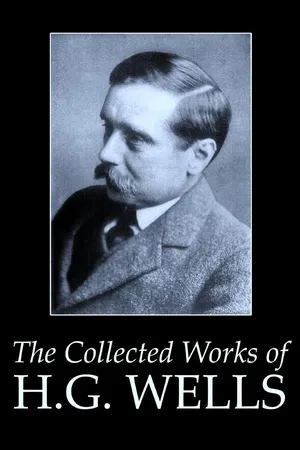History
Women's March on Versailles
The Women's March on Versailles was a pivotal event during the French Revolution in 1789, where thousands of Parisian women marched to the Palace of Versailles to demand bread and political reforms from King Louis XVI. The march resulted in the royal family being brought back to Paris and marked a turning point in the revolution, highlighting the power of popular protest.
Written by Perlego with AI-assistance
Related key terms
4 Key excerpts on "Women's March on Versailles"
- eBook - ePub
Seeing and Consciousness
Women, Class and Representation
- Gen Doy(Author)
- 2020(Publication Date)
- Routledge(Publisher)
Many of the latter included women. Many sans-culottes women and women from the poorer sections of Parisian society were politically active in ways which were not 'legally' sanctioned. For example, the famous march to Versailles in 1789 when women of Paris forced the Royal Family to return with them to Paris, or the mass gathering on the Champ de Mars on 17 July 1791, where signatures to a petition demanding a referendum on the role of the monarchy in the state were organised. 10 About fifty people were killed when this gathering was fired on by the National Guard, commanded by Lafayette. Women were active on this occasion as well and determined to participate in popular forms of political action. A young boy testified that 'we saw many people go up to sign, among them, with her children [was] an old woman, who, not knowing how to write, had one of her children sign for her'. One of the people arrested and interrogated after the Champ de Mars was Louise Evrard, a cook, who understood very well what the political question in the petition was about. It was, she said, intended 'à faire organizer autrement le pouvoir exécutif'. 11 While women were certainly excluded from legal participation in politics, this is again not completely explained by gender. Most of the writings by art historians on the French Revolution seem to overlook the fact that not all men were given legal political rights by the bourgeois Revolution either. The distinction between 'active' and 'passive' male citizens was drawn up in 1789, and persisted throughout the Revolutionary period. So it was never really the case that all men enjoyed political rights while all women were excluded from them. Male participation in official political activities was based on property qualifications. 12 10. For women's participation in political societies and organisations during this period and earlier in the Revolution, see D. Levy et al. (eds), Women in Revolutionary Paris, 1789-1795, Chicago and London, 1979 - Deborah Simonton(Author)
- 2006(Publication Date)
- Routledge(Publisher)
38 In this way the October days prefigured subsequent mobilisations of unorganised women over the cost and distribution of food, linking the economic with the political through consumption. Such activities had the potential to lead to significant revisions in the long-term political agenda and linked directly and particularly to the everyday experience of working women.As attempts at reform quickly progressed into social revolution, female faces were to be found in the crowd, on the streets and in the spaces where informal politics took place, such as the new political clubs. Women’s political activities took a range of forms, in some of which women sought to engage directly within the political upheaval, either as members of their class or explicitly as women, while others were drawn in and out of less formal political activity by struggles around subsistence. And, of course, women were to be found on all sides of the debate, both spurring the revolution forward and also resisting and even falling victim to it, while many more endeavoured to ride out the often chaotic situation prioritising family survival. We can never know the individual motivation of many of the women in the crowd or plot their participation over time and its effect on the rest of their lives. There is no evidence to suggest that the sans-culotte’s wife had political aspirations of her own, particularly in terms of full citizenship rights. Like later political movements, such as Chartism in Britain, these women appear to have endorsed the idea that not only their own but crucially their household’s interests were represented through their husband’s citizenship rights. Yet this did not induce passivity: sans-culotte women took seriously their right to petition, denounce and fill the tribunes of the Assembly, to criticise politicians and to address them as ‘tu’ to remind them of whose interests they were supposed to represent.39- eBook - ePub
- Lionel Tiger, Heather T. Fowler(Authors)
- 2017(Publication Date)
- Routledge(Publisher)
The most important single action taken by women during the Revolution began with a bread riot on October 5, 1789, after which the women, mostly from the central markets, were joined by armed men. A mixed crowd of some six or seven thousand people then marched to Versailles, where a deputation of six women saw the king and demanded bread. On the next day the royal family was brought back to Paris, escorted by National Guardsmen and what Burke in his Reflections on the Revolution in France (1976) called “all the unutterable abominations of the furies of hell, in the abased shape of the vilest of women” (Rudé 1959:2). Women were active later in the Revolution, but removing the king from Versailles was their most important accomplishment. As it turned out, those women who did the most to advance the Revolution were most injured by it. The working women of Paris suffered in many ways from conditions brought on by the Revolution. Many were employed as seamstresses, glove makers, etc. in the fashion industry, which almost collapsed thanks to the emigration of nobles, hard times, and the Revolution’s emphasis on plain dress. Poor people generally were harmed by the complete failure of the Revolution to provide relief to the poor. The revolutionary government took over the church-supported hospices that cared for the old, sick, and orphaned. It abolished almsgiving and charity bureaus, creating instead work projects to employ able-bodied males, and made cash grants to the fathers of large families. Working women were discriminated against by these measures. Even worse, the measures were based on false assumptions. To a large extent, poverty was a function of substandard wages rather than unemployment, upon which the acts concentrated. The wealth of the hospices was greatly overestimated. As the government discovered how extensive poverty was (at least a fifth of the population was destitute), it became aware that most of the poor could not be helped much - eBook - ePub
- H. G. Wells(Author)
- 2020(Publication Date)
- Shrine of Knowledge(Publisher)
O we unhappy women! But, instead of bakers’-queues, why not to Aristocrats’ palaces, the root of the matter? Allons! Let us assemble. To the Hôtel-de-Ville; to Versailles....” There was much shouting and coming and going in Paris before this latter idea realized itself. One Maillard appeared with organizing power, and assumed a certain leadership. There can be little doubt that the revolutionary leaders, and particularly General Lafayette, used and organized this outbreak to secure the king, {v2-317} before he could slip away—as Charles I did to Oxford—to begin a civil war. As the afternoon wore on, the procession started on its eleven mile tramp.... Again we quote Carlyle: “Maillard has halted his draggled Menads on the last hill-top; and now Versailles, and the Château of Versailles, and far and wide the inheritance of Royalty opens to the wondering eye. From far on the right, over Marly and Saint-Germain-en-Laye; round towards Rambouillet, on the left, beautiful all; softly embosomed; as if in sadness, in the dim moist weather! And near before us is Versailles, New and Old; with that broad frondent Avenue de Versailles between—stately frondent, broad, three hundred feet as men reckon, with its four rows of elms; and then the Château de Versailles, ending in royal parks and pleasances, gleaming lakelets, arbours, labyrinths, the Ménagerie, and Great and Little Trianon. High-towered dwellings, leafy pleasant places; where the gods of this lower world abide: whence, nevertheless, black care cannot be excluded; whither Menadic hunger is even now advancing, armed with pike-thyrsi!” Rain fell as the evening closed. “Behold the Esplanade, over all its spacious expanse, is covered with groups of squalid dripping women; of lank-haired male rascality, armed with axes, rusty pikes, old muskets, iron-shod clubs (batons ferrés, which end in knives or swordblades, a kind of extempore billhook); looking nothing but hungry revolt
Index pages curate the most relevant extracts from our library of academic textbooks. They’ve been created using an in-house natural language model (NLM), each adding context and meaning to key research topics.



